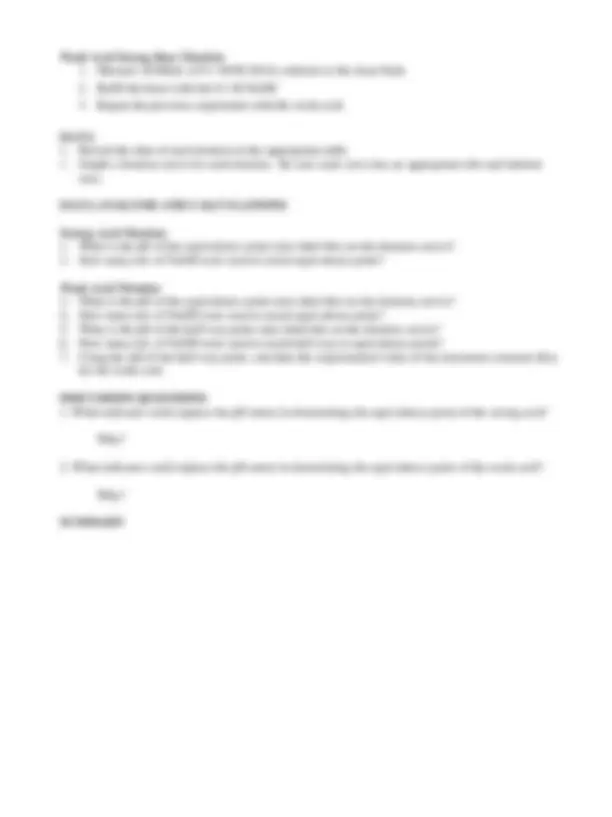



Study with the several resources on Docsity

Earn points by helping other students or get them with a premium plan


Prepare for your exams
Study with the several resources on Docsity

Earn points to download
Earn points by helping other students or get them with a premium plan
Community
Ask the community for help and clear up your study doubts
Discover the best universities in your country according to Docsity users
Free resources
Download our free guides on studying techniques, anxiety management strategies, and thesis advice from Docsity tutors
base NaOH while recording the pH. From the collected data a titration curve will be plotted for each acids and differences in the curves noted.
Typology: Study notes
1 / 2

This page cannot be seen from the preview
Don't miss anything!


In this lab you will be titrating both a strong acid (HCl) and then a weak acid (HC 2 H 3 O 2 ) with a strong base NaOH while recording the pH. From the collected data a titration curve will be plotted for each acids and differences in the curves noted.
Most substances that are acidic in water are actually weak acids. Because weak acids dissociate only partially in aqueous solution, equilibrium is formed between the acid and its ions. The ionization equilibrium is given by: HA(aq) H+(aq) + A-(aq) Where A-^ is the conjugate base. The equilibrium constant is then: Ka= [H+][A-] / [HA]
The smaller the value for Ka, the weaker the acid. Weaker acids ionize less ([H+] is smaller compared to [HA]) and therefore have a less drastic effect on pH.
Strong acids such as HCl ionizes almost completely in water.
For each of the titrations plot the graph of pH versus volume of base added. In each titration curve locate the equivalence point and the half-way point. The equivalence point assumed to correspond to the mid- point of the vertical portion of the curve, where pH is increasing rapidly. The half-way point is assumed to correspond to the mid-point of the horizontal portion of the curve, where pH is changing very little. From the graph read the volume of base need to the reach the end point and half-way point.
There are a number of differences between the titration curves for a strong acid versus the weak acid.
Weak Acid Titration The weak-acid solution has a higher initial pH. The pH rises more rapidly at the start, but less rapidly near the end point. The pH at the equivalence point does not equal 7.00 (pH > 7.00) for the weak acid titration.
PURPOSE To construct 2 titration curves. One of a strong acid with a strong bases and the other, a weak acid with a strong base. Also to determine the Ka of the weak acid using the constructed titration curve.
1. Prep the buret with 0.1 M NaOH solution.
Strong Acid Strong Base Titration-
Weak Acid Strong Base Titration
DATA ANALYSIS AND CALCULATIONS
Strong Acid Titration
Weak Acid Titration
DISCUSSION QUESTIONS
Why?
Why?
SUMMARY